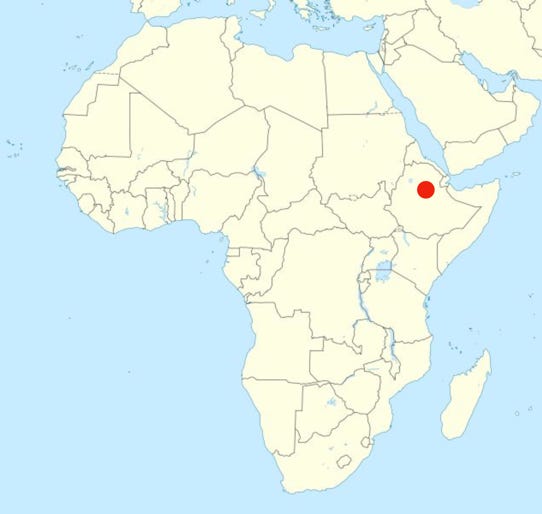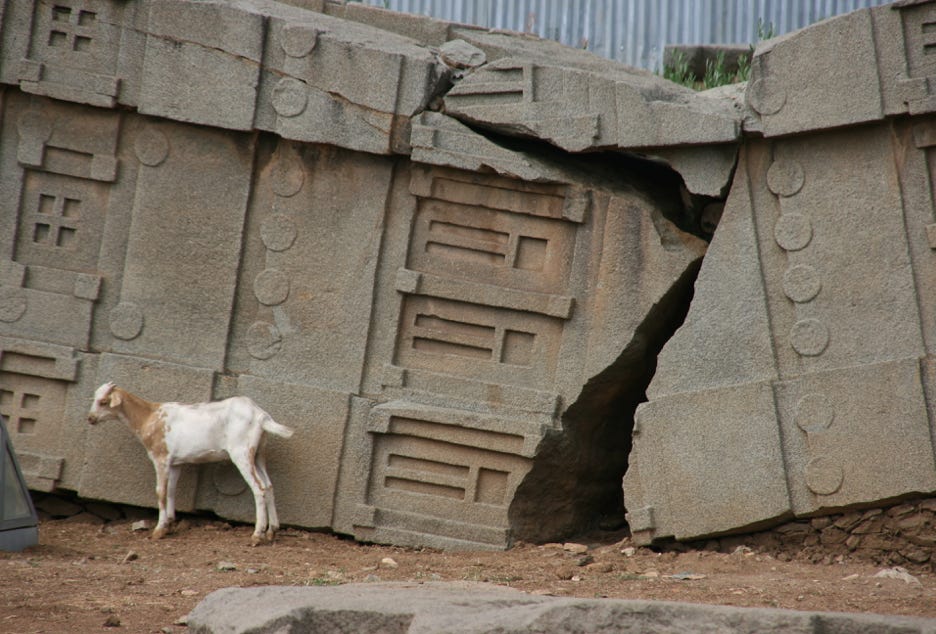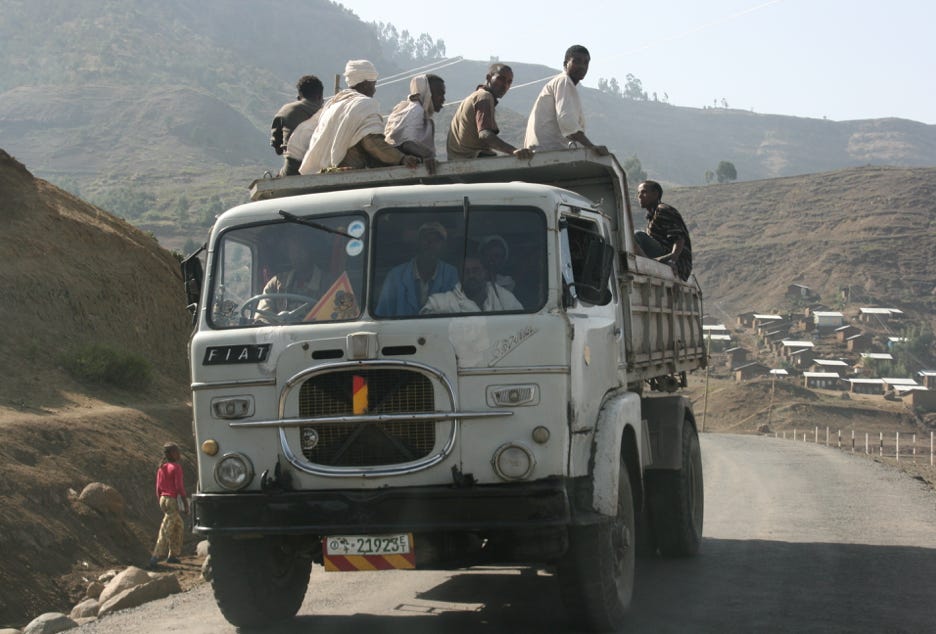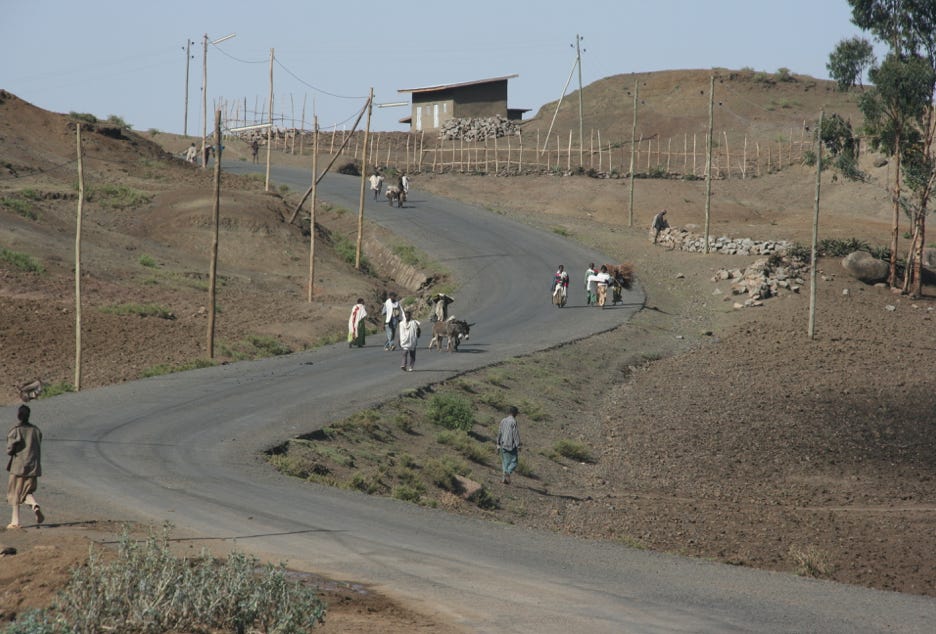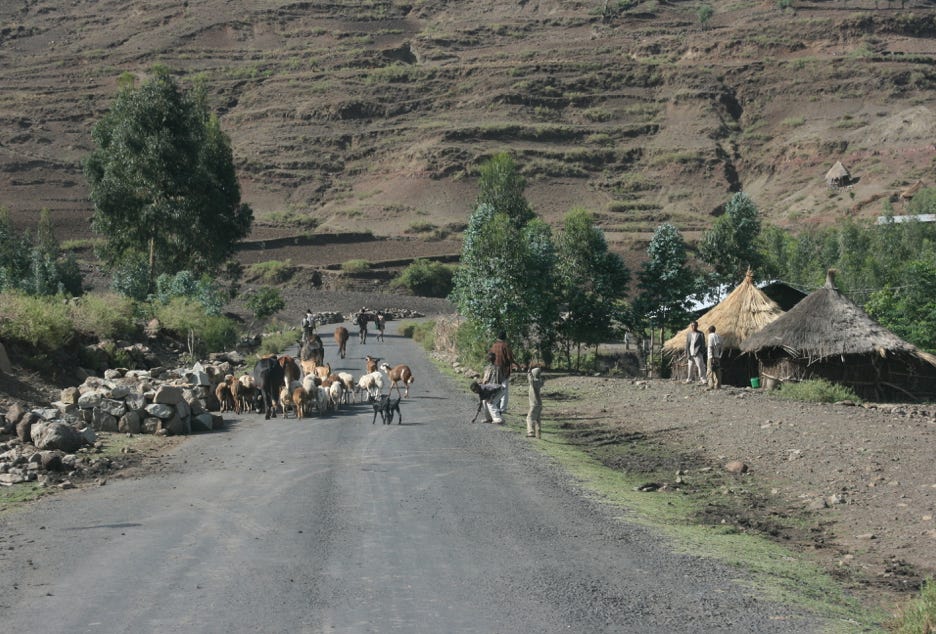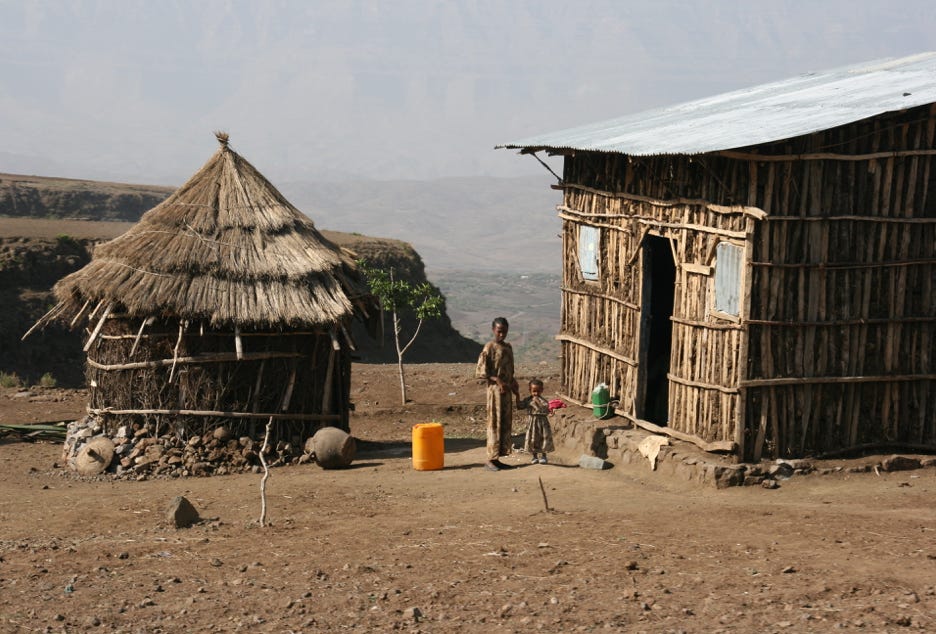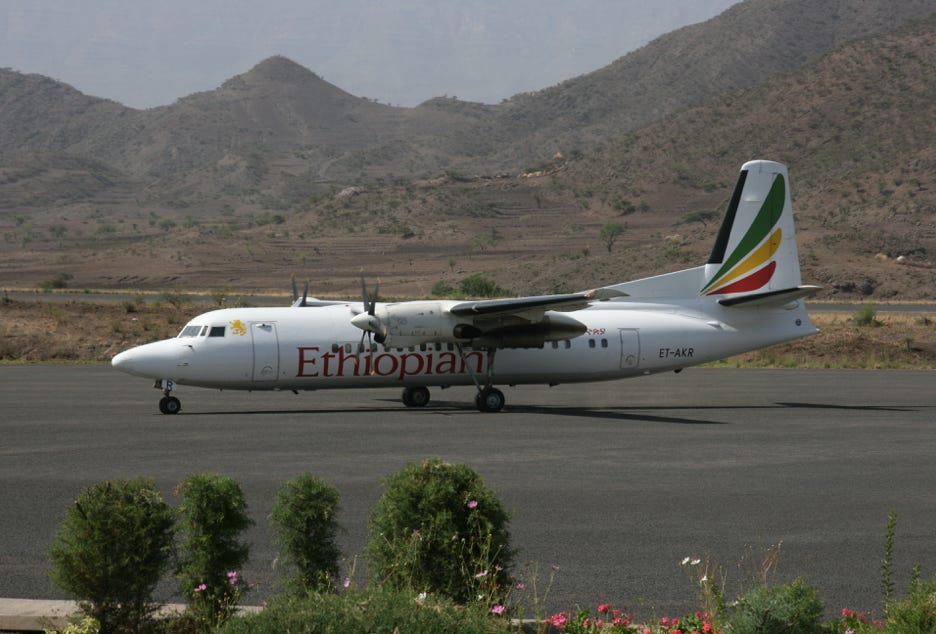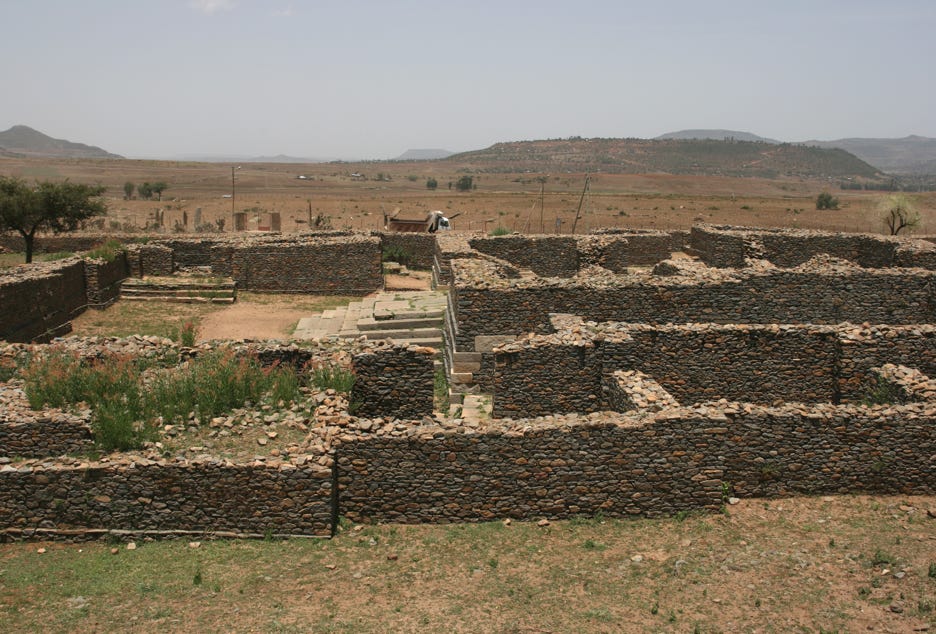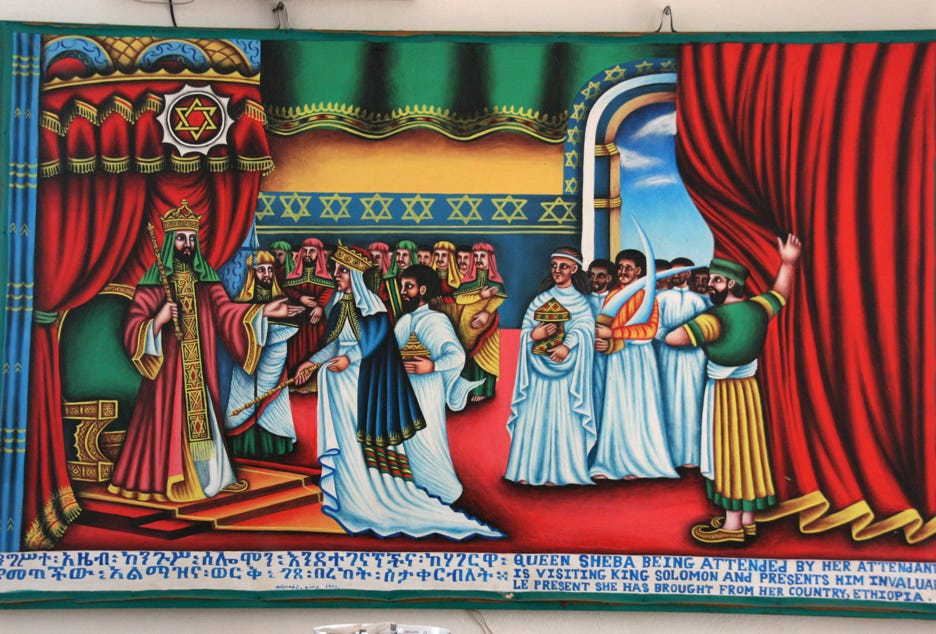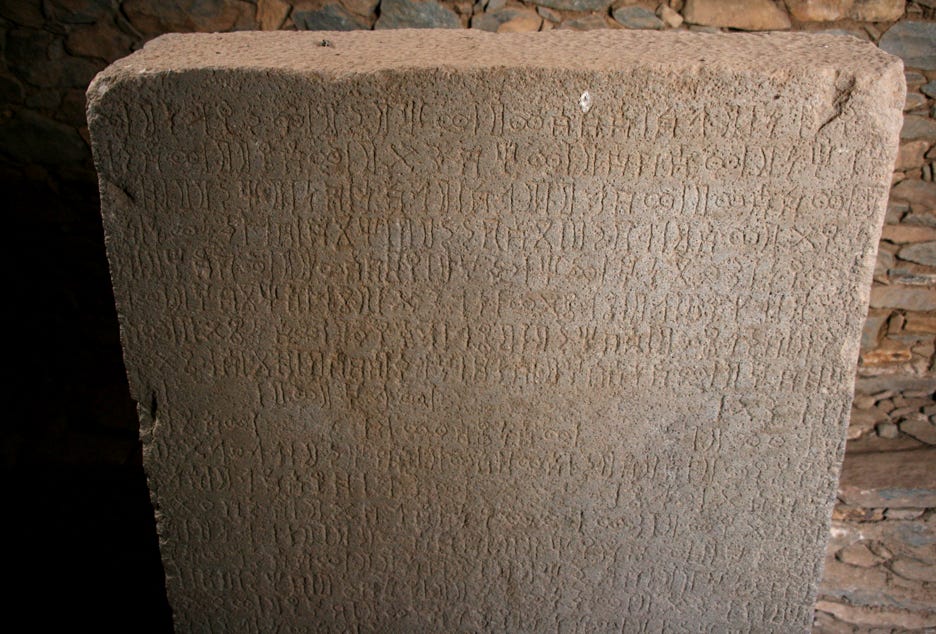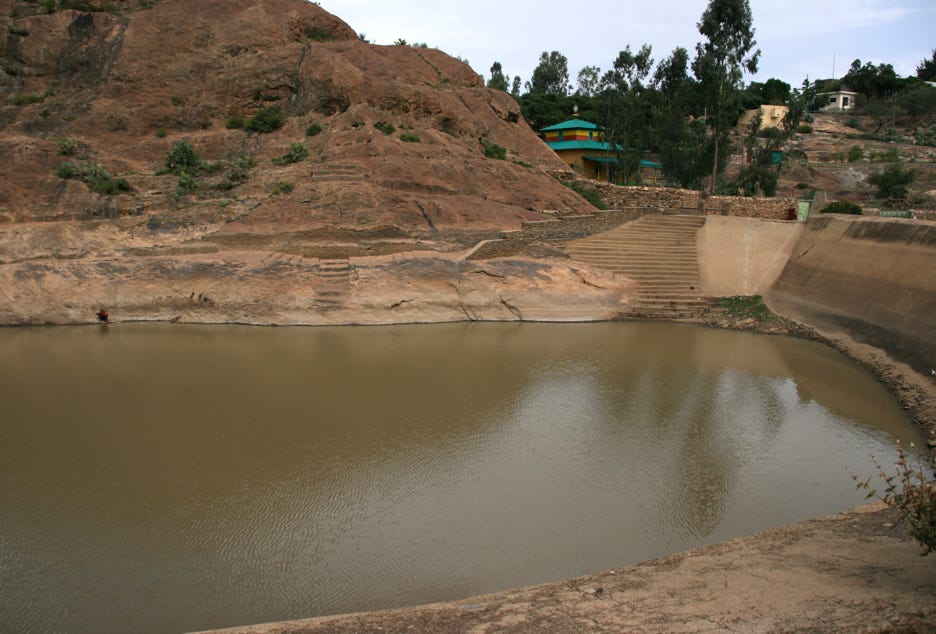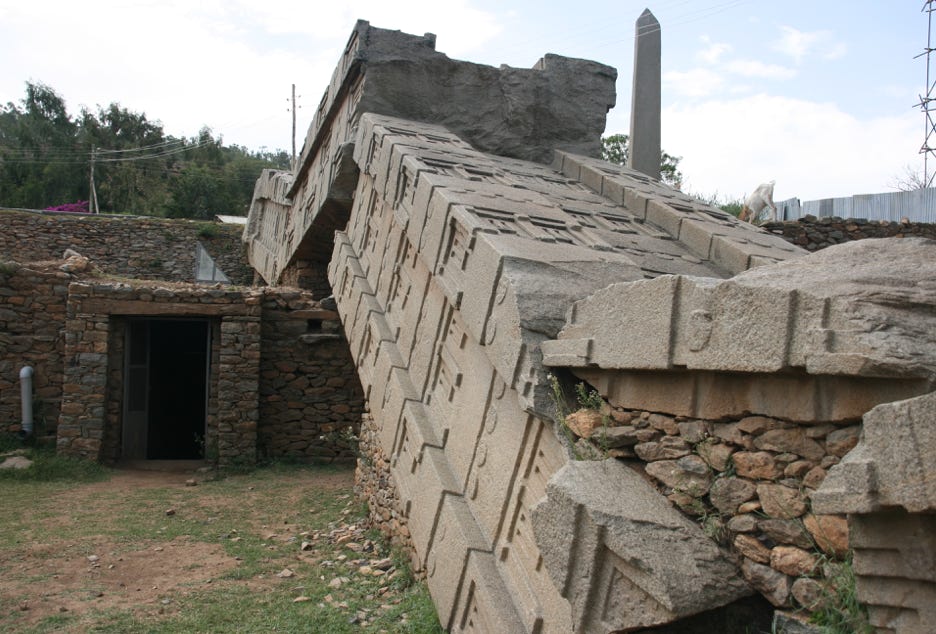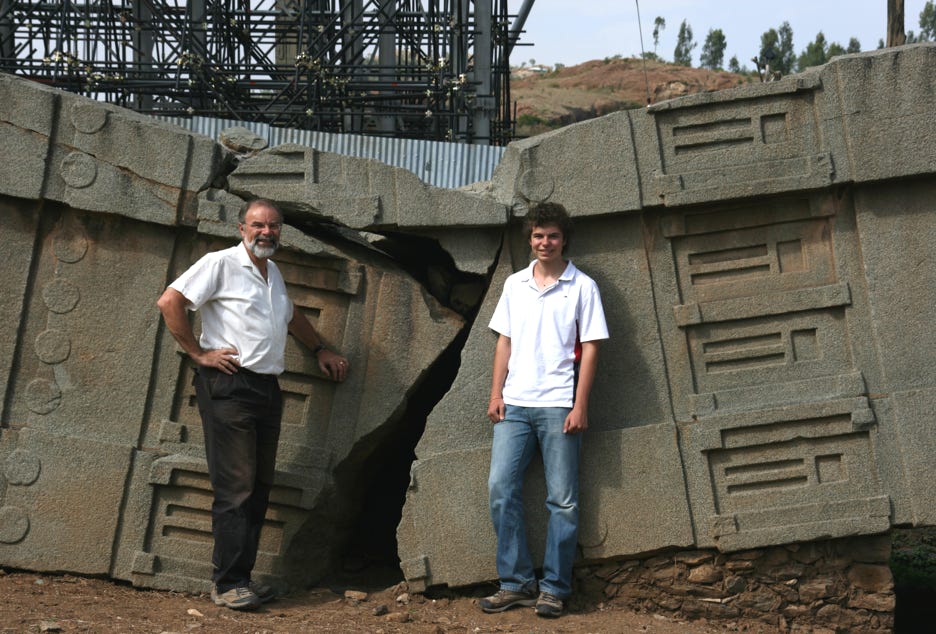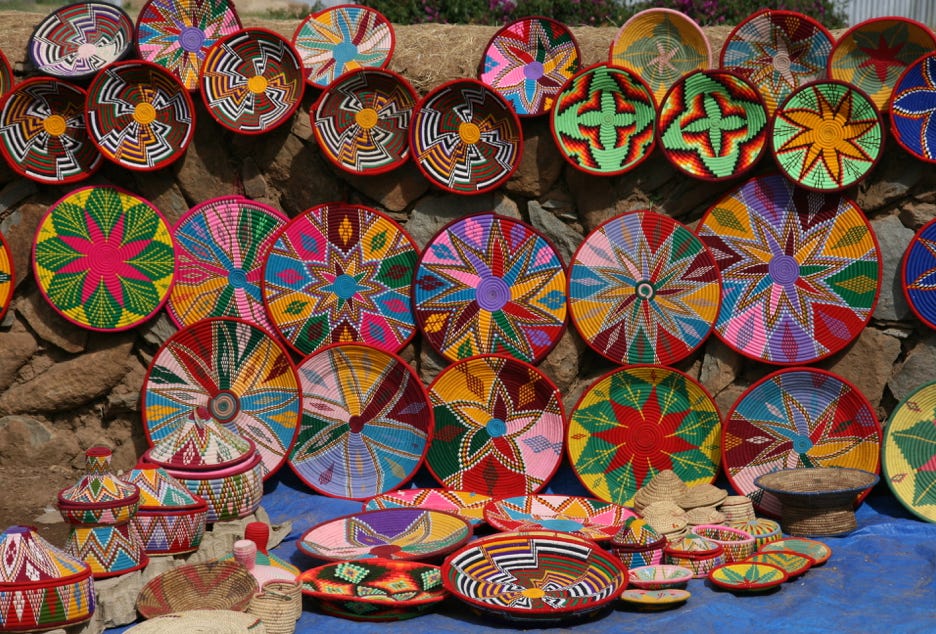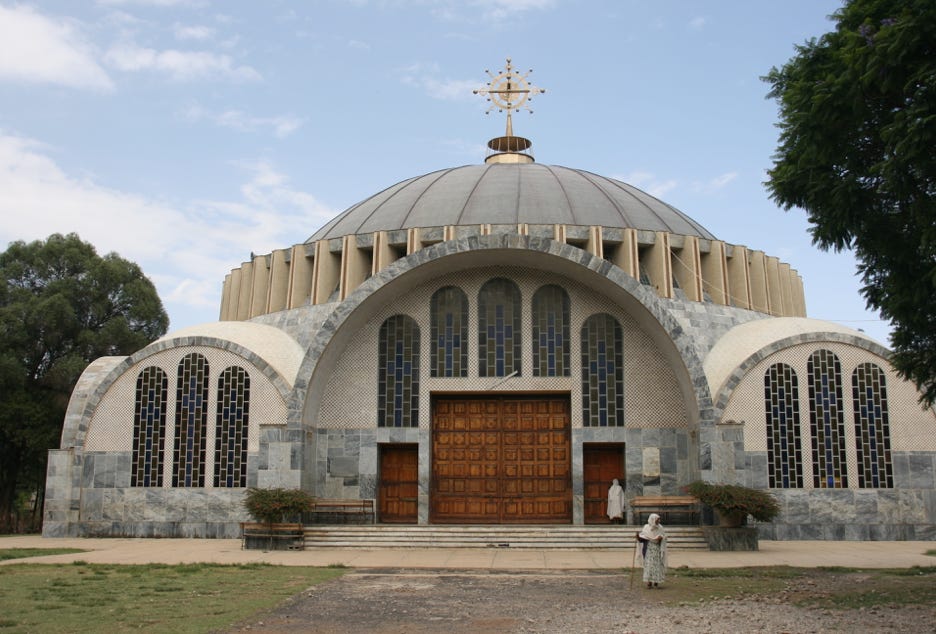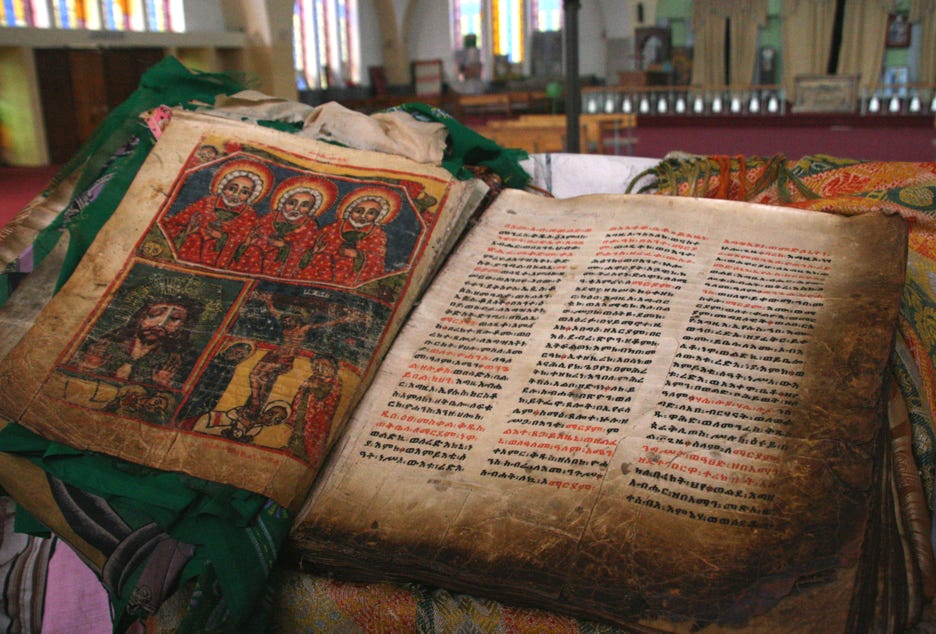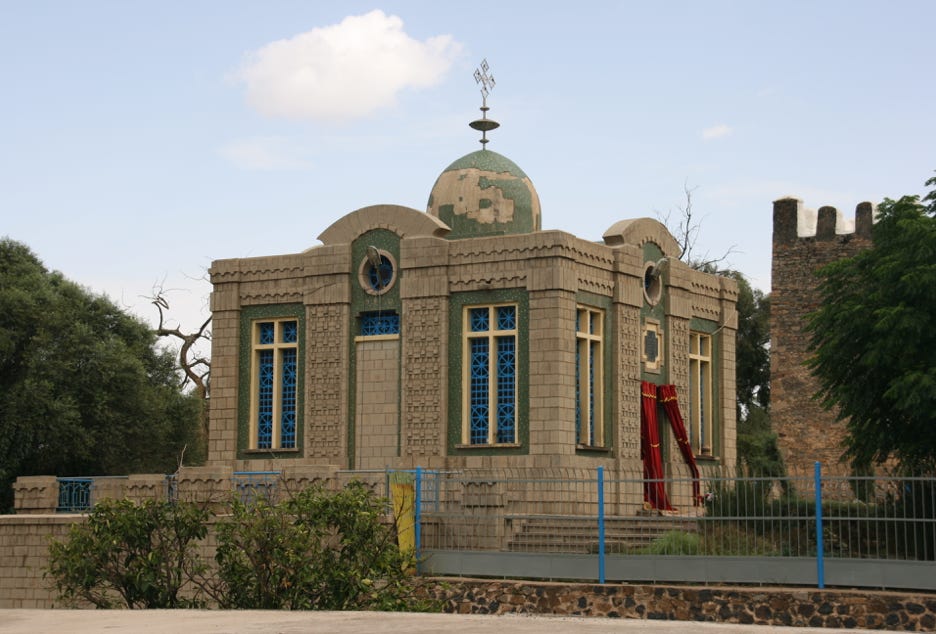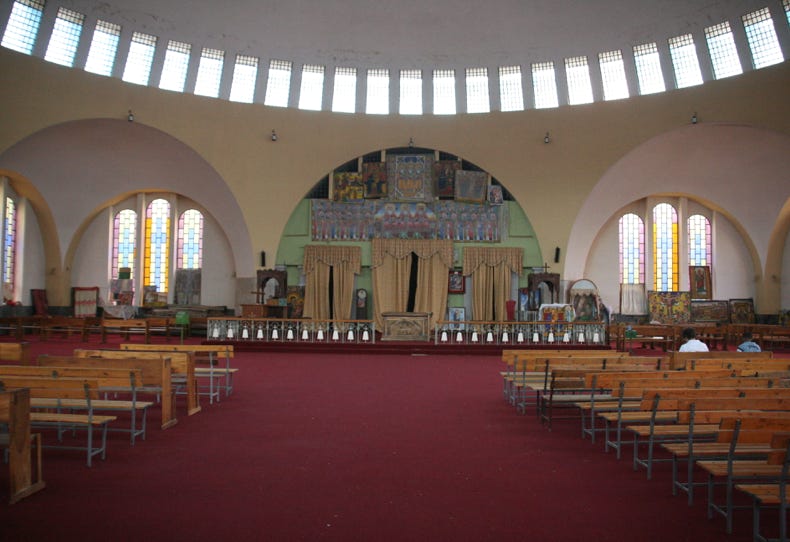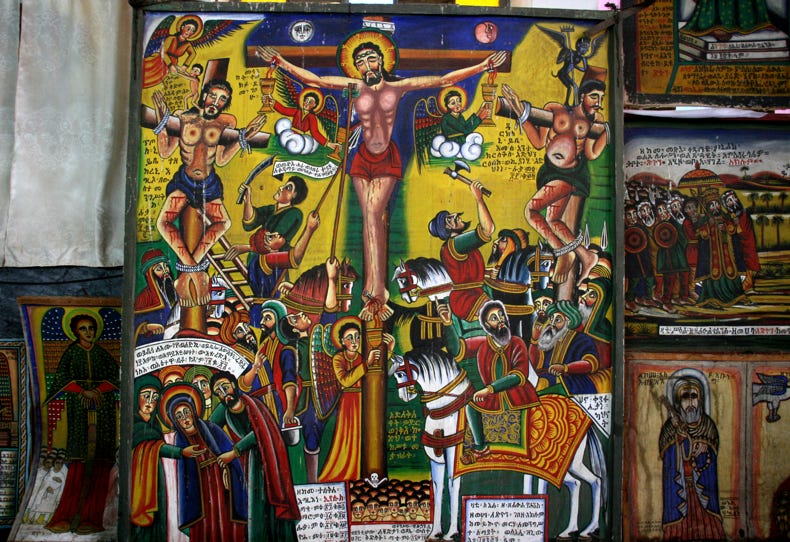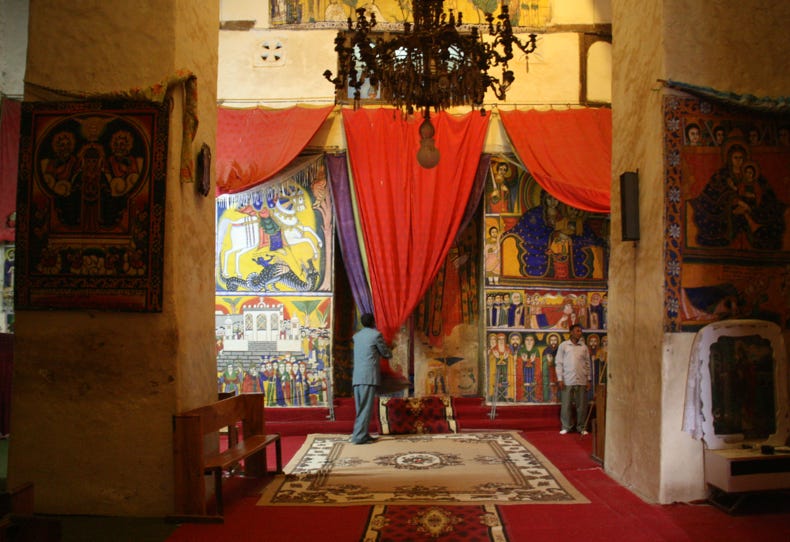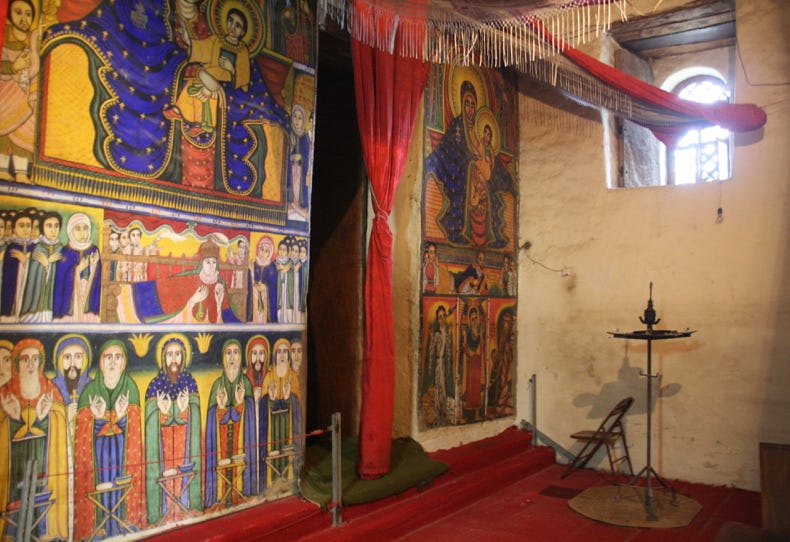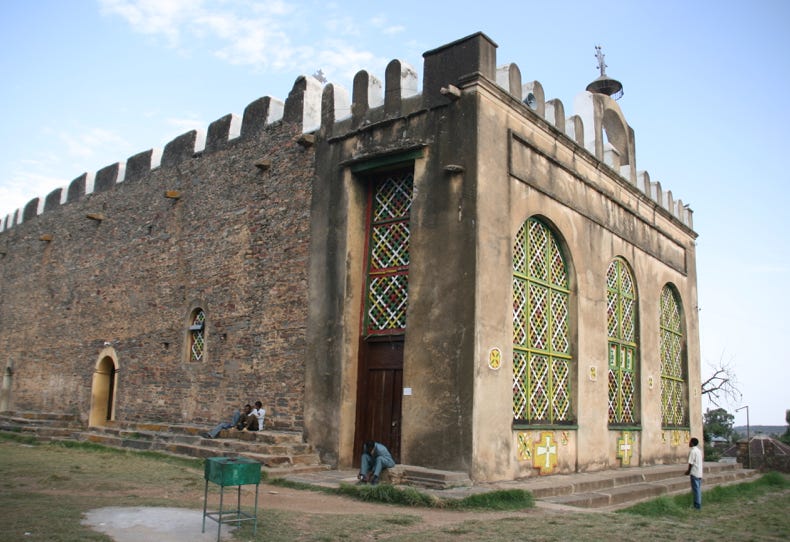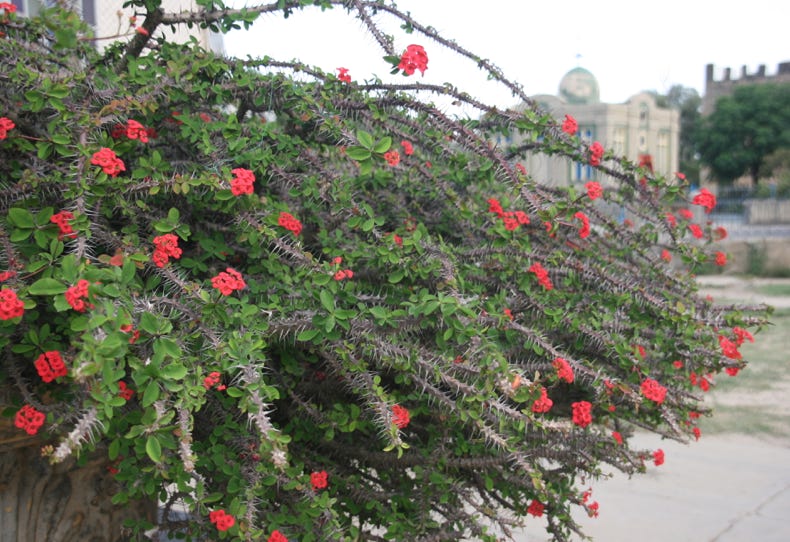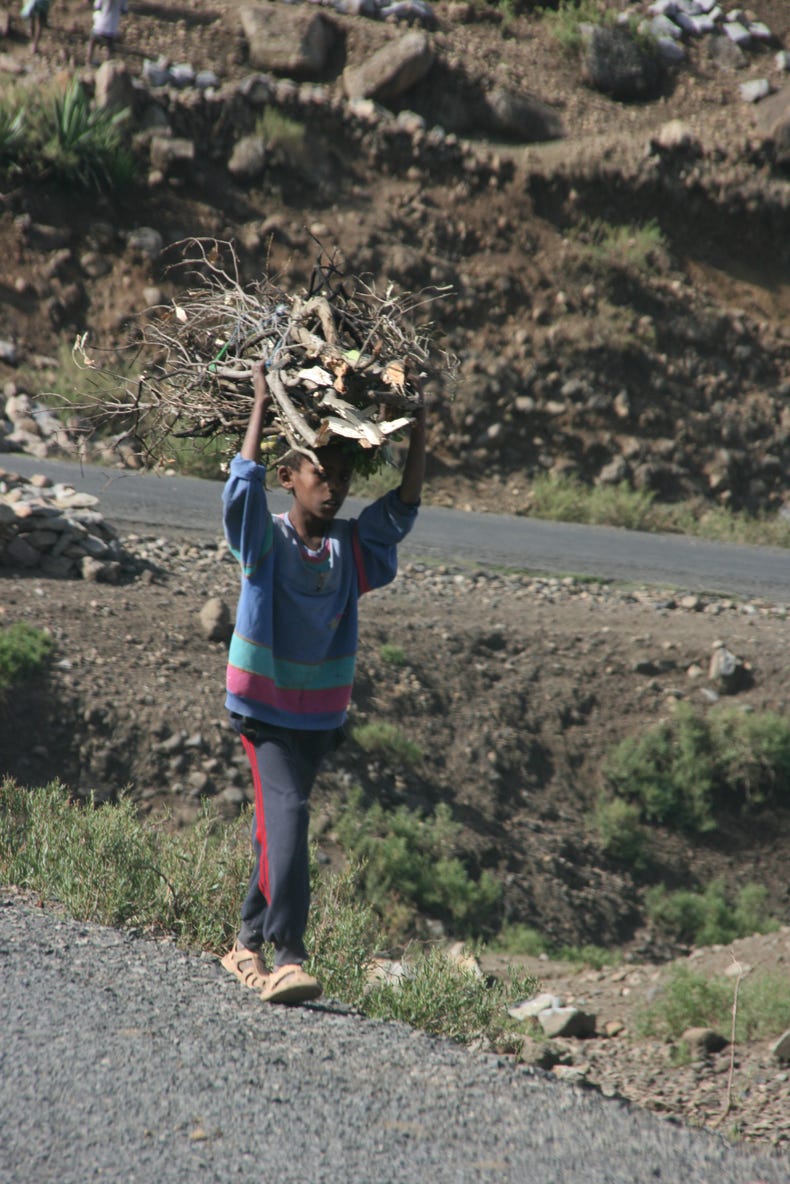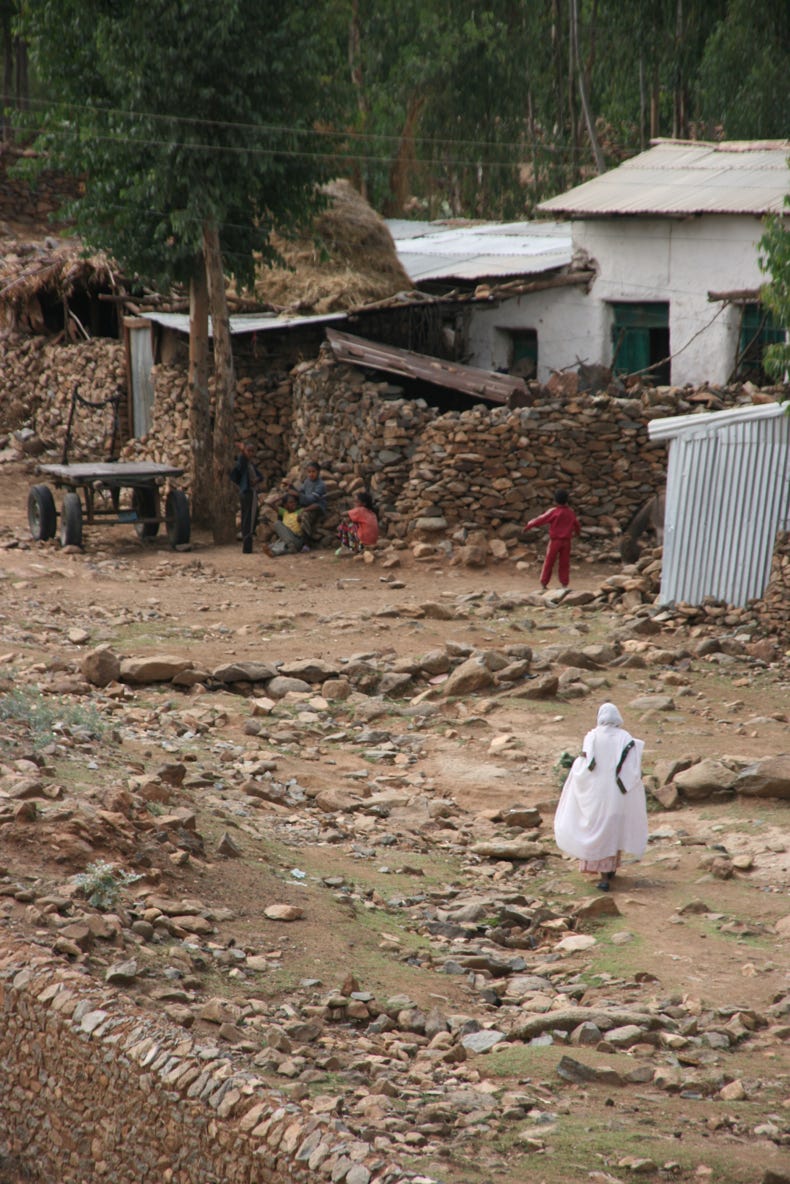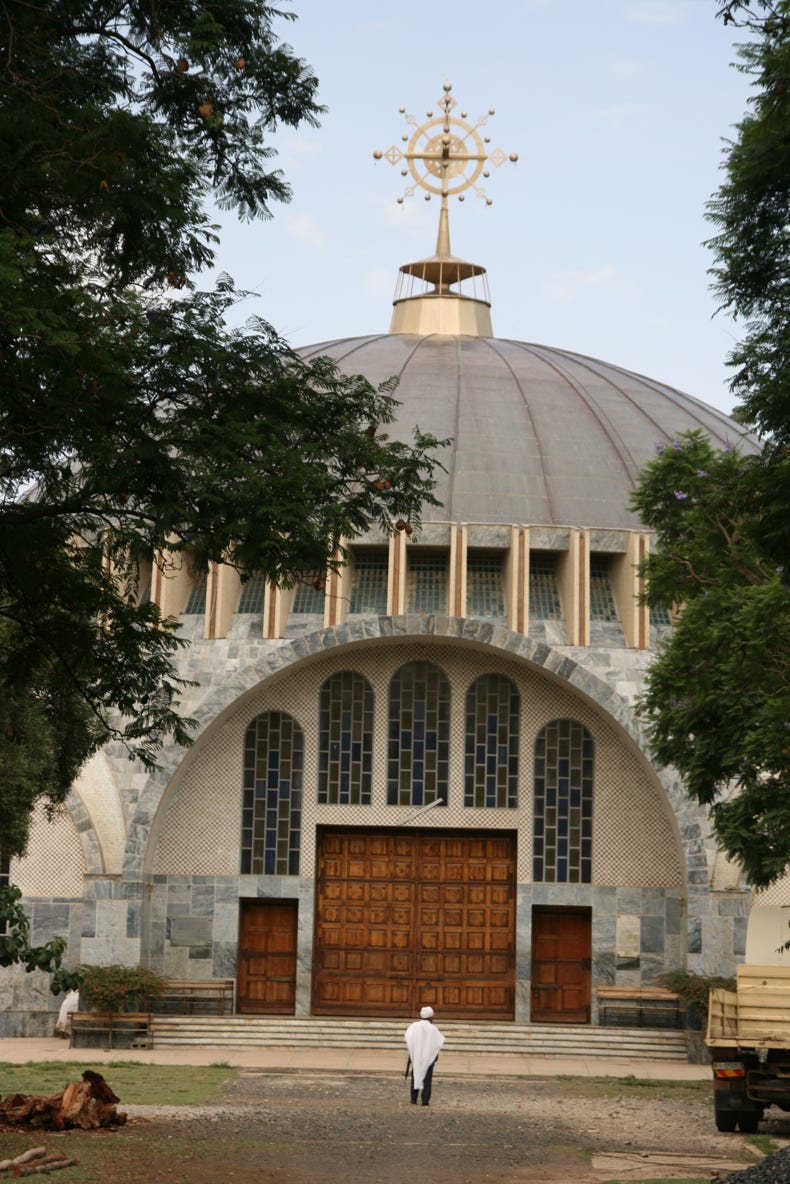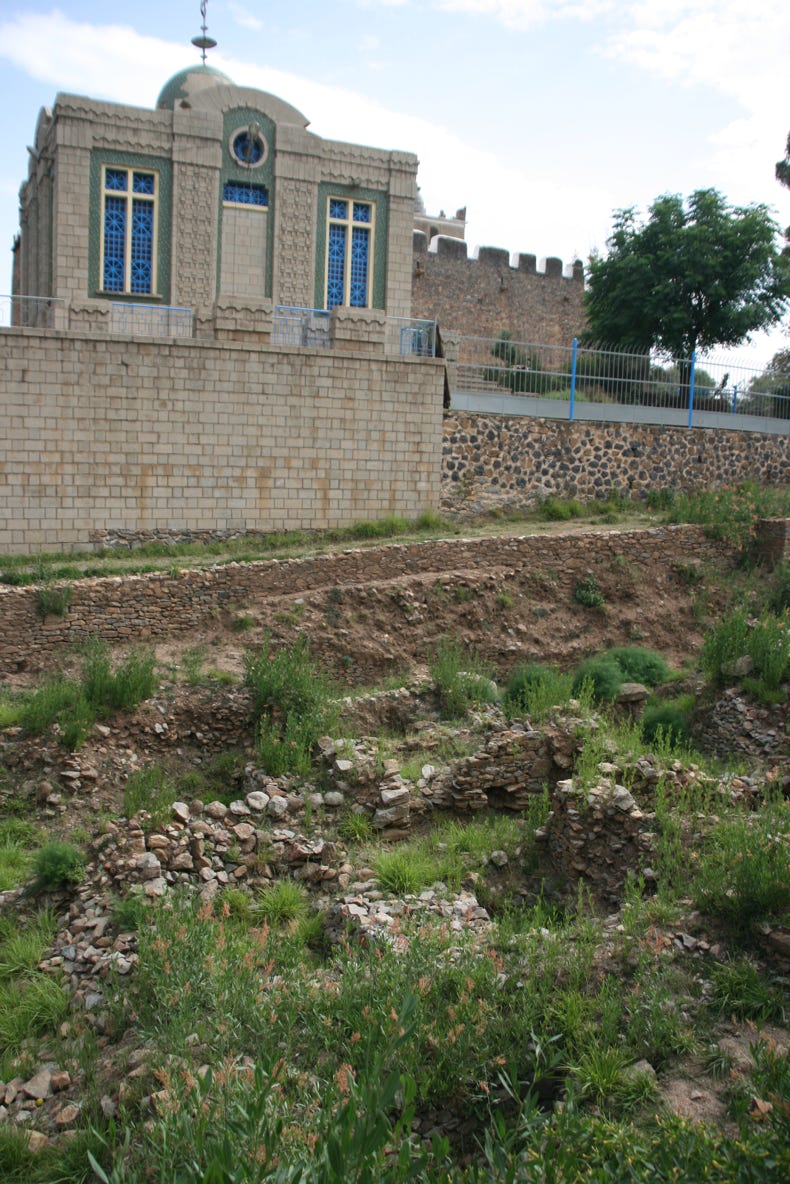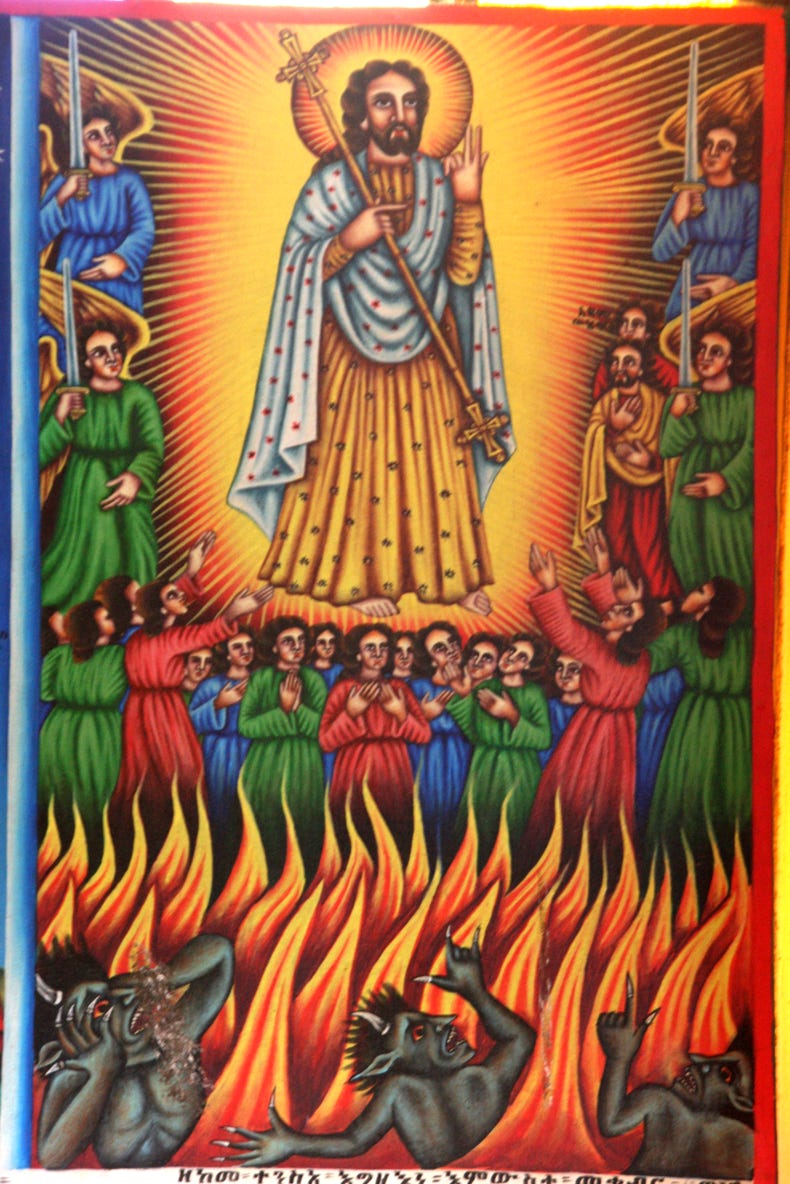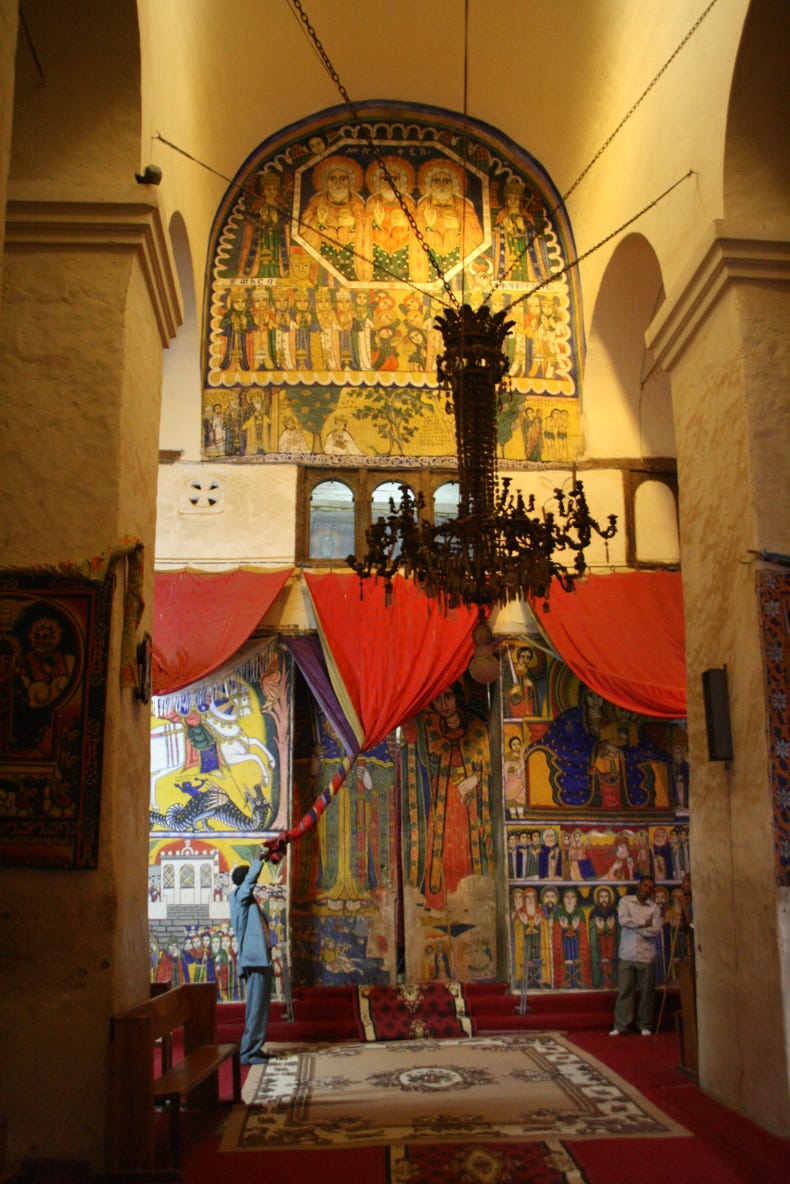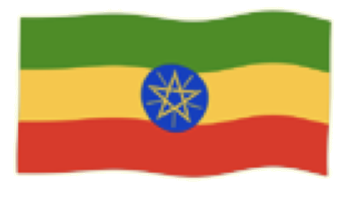

Axum turned out to be better than I had expected. A few weeks ago, a colleague who had visited Ethiopia many years ago advised me to ‘give Axum a miss’. The Lonely Planet guide begins its description of Axum with the words “Sprawling, dusty and rural - Axum is modest almost to a fault”. And it is true that initial impressions are of a frontier town rather than the former capital city of an ancient empire that in its day rivalled Egypt, Persia and China.
But I am getting ahead of myself, because I woke up this morning not in Axum, but still in beautiful Lalibela. Andrew and I were actually a bit reluctant to leave Lalibela, as the experience we had enjoyed over the previous two days had been wonderful in every way (apart from a mild tummy upset). And after a great breakfast of toast and muesli, our final Lalibela experience lived up to the high standard of all the others; the half-hour drive to the airport in a minibus that was much more crowded than we had expected revealed spectacular scenery and insights into daily life (much of which seems to be conducted roadside), all superbly illuminated from a photographic point of view. I wish I had the space to share a dozen or more photos taken on the half-hour drive, but the few shown here will have to suffice – they may n to be the most spectacular images, but they do give a good overall idea of the road and the things we saw.
Andrew and I were the only passengers joining this final sector of the daily “milk-run” flight to Axum, so we received excellent attention from Ethiopian Airlines. The airline rang our hotel the previous evening to tell us we could delay our arrival at the airport by half an hour if we wished because it would not be a busy flight. We were greeted by name upon arrival at the airport (“Ah, you must be Mr Stephen and Mr Andrew”), and after checking in our bags, we were invited to have a coffee in the upstairs cafe with the promise that someone would come and collect us when it was time to move down to the departures hall. Of course, there were more than just the two of us on the flight, as several other passengers were continuing to Axum after having joined the flight at an earlier airport. Nonetheless, there were only about 15 passengers in total, and with the free seating that Ethiopian Airlines operates on its Fokker F-50s, Andrew and I each had plenty of options to choose window seats with not-too-badly scratched windows.
Upon arrival in Axum, it was immediately apparent that we were in a very different part of Ethiopia from where we had come. Part of the difference was physical; this far northern part of Ethiopia is markedly more arid than the areas further south, and this was reflected in the dry, rocky soil, scattered and stunted trees, and the abundance of various types of cacti. As a result of the difficult physical environment, the people seemed markedly less affluent than in other parts of Ethiopia where we had visited. The other difference between this area and other parts of the country was slightly more sinister. Axum is in Tigray province, which like Eritrea before its separation from Ethiopia in 1993, has an armed separatist movement. The lines of troops we saw outside the airport and the strong overall military presence were reminders that Tigray has a slightly different status than any other part of Ethiopia today.
Entering Axum township after the drive from the airport confirmed that it had an elusive charm. The roads were (with the exception of the main street) dusty, the buildings low and often run-down, and even the mules, goats and camels that wandered randomly along the streets seemed to be moving in slow motion. Our first stop in Axum was, as usual, our hotel so we could drop our bags and be free of luggage for sightseeing. Our hotel was the Remhai Hotel, a surprisingly comfortable establishment with large (though quite dark) rooms, electricity that worked and even a minibar that sold Pepsi for the same price as the local supermarket.
It was too early for lunch, so we decided to start looking around town. Our first stop was the Queen of Sheba’s Palace. To understand the importance of this place, and many others in Axum, you need to understand that the Queen of Sheba holds a very significant place in the history of Axum and the Axumite Empire that once stretched north into Yemen and Saudi Arabia as well as beyond the borders of present day Ethiopia. She is said to have lived in about 1000 BC, and during her reign, she apparently went to visit King Solomon in Israel to present gifts and learn from his famed wisdom. She stayed for several months, and while there, Solomon assured her that he would take nothing of hers if she took nothing of his. One night, however, after serving her a particularly spicy meal, he placed a glass of water beside her bed. The Queen woke up and drank the water to quench her thirst. As she had thus taken something of Solomon’s, he demanded something in return, and to cut a long story short, she returned to Ethiopia pregnant with Solomon’s child. It is for this reason that Ethiopia’s royal rulers claimed direct descent from King Solomon right through to the last emperor, Haile Selassie. Ethiopians still believe that they are a special nation chosen by God.
The palace was somewhat less interesting than the legend, comprising a collection of rocks said to represent the excavated lower walls of the palace. Apparently, some archeologists date the walls at the 6th or 7th century AD, more than 1500 years after the Queen of Sheba is said to have lived, but as with most excavation sites in Axum, there is usually layer upon layer upon layer, with older remains underlying the newer ones, so it is hard to be too critical. At this palace, we did see evidence of a partly excavated older palace of which only a small part had been revealed. It is said that 98% of Axum’s remains remain undiscovered beneath the ground; it is an extremely difficult statistic to refute! Or to verify :-)
After having travelled to the edge of town to see the palace, it was definitely lunch time, so we returned to the hotel (where lunch was included in the cost). I was certainly ready to have a change from injera, and the menu did not disappoint; Andy had vegetable soup followed by “fish in hunnie and mastud sors” while I had chicken soup followed by steak and mushroom sauce (this is my ‘translation’ from the menu).
After this excellent lunch, we were ready for a full afternoon of exploring Axum. Our first stop was the tomb of King Kaleb, dating from the 6th century. The tomb itself was not particularly impressive, being quite small and covered by some of UNESCO’s aesthetically insensitive protective roofing. However, what WAS impressive was the view from the hilltop location, looking northwards across the farmlands to the distant, jagged mountains of Adwa near the border with Eritrea. The view had special historical significance for Ethiopians because it marked the site of a huge battle between the Ethiopians and the Italians in 1895, which the Ethiopians won (as every Ethiopian knows).
On our way down the hill, we stopped at an insignificant looking little hut beside the road, which contained something quite remarkable - Ethiopia’s version of the Rosetta Stone. Unlike the Rosetta Stone, which is found today in the British Museum in London, this stone tablet still stands where it was erected in about 350AD – perhaps because it contains a message in the engraving proclaiming that “the person who should dare to move this tablet will meet an untimely death”!
The stone tablet contains a description of military campaigns of the Christian King Ezana between 330 and 350 in Ethiopia and in southern Arabia, as well as his efforts to return the Ark of the Covenant from Lake Tana to Axum (more about that later in the day!). The inscriptions were in three languages - Greek (the ‘universal’ language of the day), Ge’ez (the old form of Amharic, which is Ethiopia’s main language today) and Sabaean (the ancient language of southern Arabia, which the Axumite empire occupied).
A little further along the road we stopped again, this time beside a large pool of water. Known as the Queen of Sheba’s bath, and allegedly once the royal swimming pool, it is said by archeologists to have been built at least 1000 years after the Queen of Sheba’s reign. It looked more like a water reservoir than a royal swimming pool, and indeed several women were taking buckets of water from the pool while we were there. Much more interesting, for me, was what was happening on the other side of the road.
From our stop, we had a great view overlooking the old residential part of Axum, with its small stone houses and rocky streets, and we could observe everyday life without intruding. One particularly fascinating moment occurred when an Orthodox priest approached a house and two small boys ran to him, knelt down to kiss his feet, then stood up to kiss his hands before leading him by the hand into their home where their mother was waiting by the door.
Our next stop was claimed to be Axum’s most significant and distinctive feature, the town’s largest stellae field. There are many stellae fields in and around Axum, stellae being stone obelisks that were built to mark graves or to proclaim the authority, power and greatness of the sponsor’s family. In that sense, they are perhaps the Ethiopian equivalent of Egypt’s pyramids. Some of the stellae date back 5000 years, and while most were simply roughly-hewn lumps of rock, some were beautifully carved from solid pieces of granite. They vary in height from 1 to over 30 metres in height, although sadly most have fallen over completely or lean at awkward angles. While we were there, a team of Italian engineers was in the final stage of re-erecting a fallen stele, using modern machinery rather than the teams of hundreds of labourers that were originally used. To be frank, I found some of the collapsed stellae (the vast majority) more interesting than the ones that were standing (both are shown in the photo to the left), as many of the standing stellae resembled fairly plain, out-of-proportion and over-sized tombstones to my eyes – which I guess is what they were!
Beside the stellae field was a small museum, which we decided might be worth exploring. That was probably a mistake on our part. The museum comprised a dusty collection of earthenware flasks, coins and other objects recovered from excavations and graves. The objects were held in wooden and glass cabinets, and the curator insisted on giving us a fairly detailed description in heavily-accented, slow, deliberate, broken English of every clay vessel in the museum - fortunately the collection is not huge so this took only about 20 minutes or so. More interesting, and certainly more colourful, were the souvenir stands outside the museum where the woven baskets brought a rare splash of colour to this somewhat colourless town.
After a quick look at some excavated tombs near the stellae field, we crossed the road into the compound containing the St Mary of Zion churches. This was a great way to finish the day, and we spent quite a long time there. There have been four churches on this site since the first was built in about 350 AD – the first Christian church in Africa. The remains of the foundations of this first church can still be seen, although that was not why we had come to visit.
The fourth and newest church was built by Haile Selassie in the 1960s. Its design was an interesting combination of a dome rising from a square base, and was remarkably light and spacious inside. It contained some very interesting modern religious paintings in traditional Ethiopian style, but for me the highlight was seeing an illuminated Bible, hand-written in the Ge’ez language, and produced in about 800 AD. Although wrapped in several layers of cloth, it is kept on a podium at the back of the church, and we were honoured to be able to view some of its pages - and photograph them provided we didn’t use a flash. The colours remain vibrant despite the age of the book and the darkened, worn edges where the pages have been turned over the centuries, but the quality of the work was certainly a testimony to the artistry of the early monks who produced it.
Having admired the new church and its contents, we quickly explored a subterranean museum housing a collection of church regalia, crosses and other paraphernalia, before making our way across to the third St Mary of Zion church, built in the mid-1600s. It is still used as a monastery, and indeed the reason that the fourth church was needed was that women were not (and are still not) allowed to enter this building. Having declared that we too were Christians, we were privileged to be invited inside the monastery by the priest and his associate and there is no doubt that the interior of the monastery has a very special, contemplative atmosphere.
But perhaps the most remarkable building in the St Mary of Zion complex was in many ways the one that was least assuming architecturally. In the grounds of the monastery was a small chapel said to contain the original Ark of the Covenant. Ethiopian Christians believe that the Ark of the Covenant was brought from Israel to Ethiopia a little after 1000BC by King Menelik, who was the son of the Queen of Sheba and King Solomon. Every Ethiopian Orthodox church today has a replica of the Ark of the Covenant (which comprises the stone tablets on which God gave Moses the Ten Commandments), and these are kept in the Holy of Holies that all Ethiopian Orthodox churches have. The original Ark is protected by one guardian who devotes his life to the task, never leaving the monastery compound and cutting himself off from all worldly contact. No-one ever gets to see the original Ark of the Covenant as it is claimed that anyone who does so will immediately burst into fire.
Axum is clearly a city that takes its Christianity seriously. There is a very small Muslim population, but there is no mosque, for much the same reason that there are no Christian churches in Mecca or Medina – Axum is regarded as a holy city because it is the place where the original Ark of the Covenant resides. There is no doubting that this rough frontier town does have a very special spirit and focus, and it has been great to experience it.
